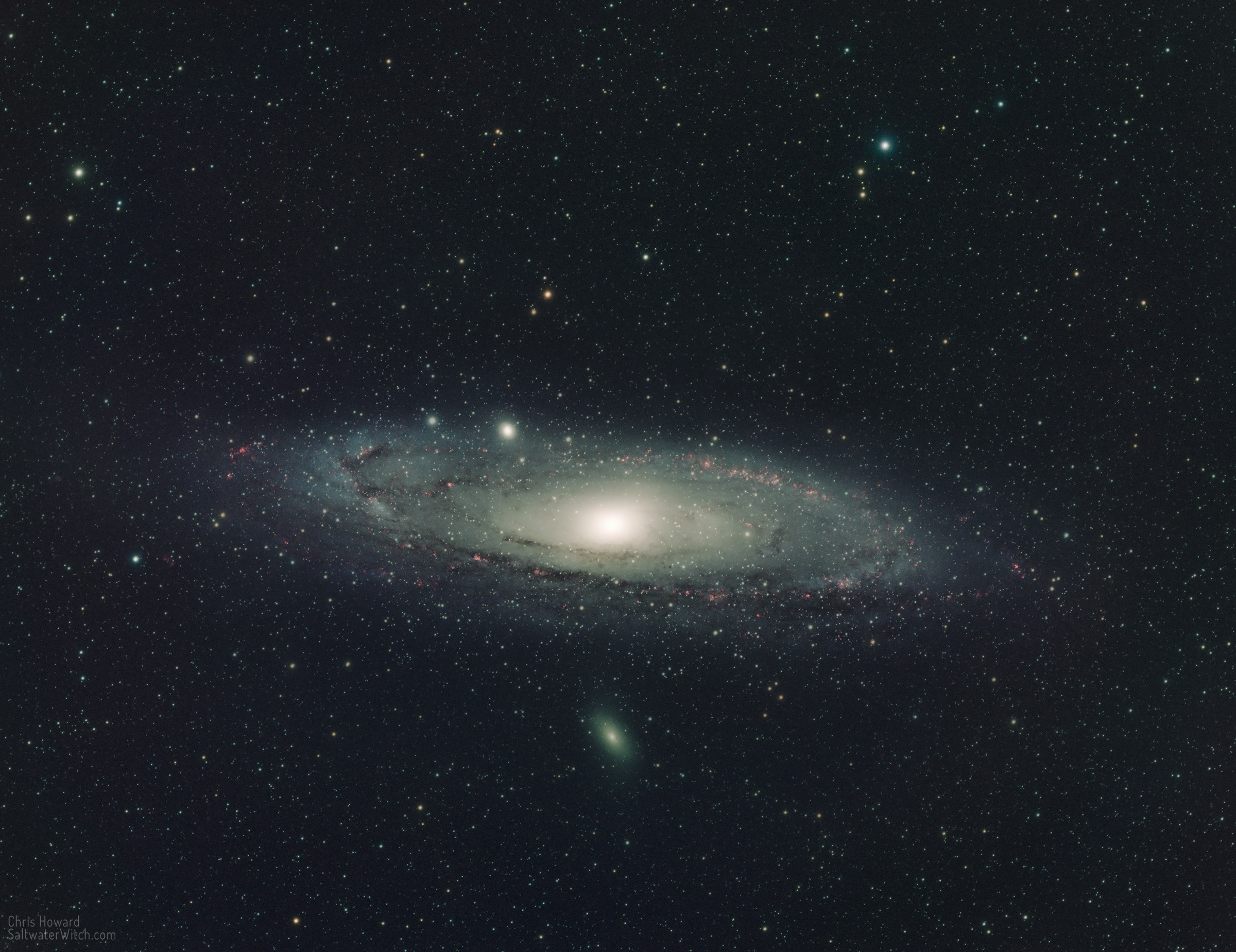M31 in HaRGB
September 25, 2022
Beautiful skies last night, mostly clear, and no moon, the perfect night for broadband color with separate RGB filters, and I went after one of the finest northern hemisphere color targets. Andromeda (M31) is one of our galactic neighbors at only 2.5 million lightyears away. Our own galaxy, the Milky Way, may have as many as 400 billion suns, while Andromeda may have as many as a trillion suns. M31 is about 152,000 light-years across, and the Milky way is a bit under 90,000 lightyears. We're both good-sized barred spiral galaxies. Stick around for a few billion years and you can watch us collide and form one massive galaxy. Notes: 51 x 120-sec Red, 53 x 120-sec Green, and 56 x 120-second Blue filter (Astronomik Deep Sky RGB filters), 60 x 180-second Hydrogen-alpha (Astronomik 6nm), ZWO ASI1600MM-Pro monochrome camera running at -10C, ZWO AM5 EQ mount, William Optics SpaceCat 51 apochromatic refractor.
The Milky Way and Andromeda are two of the largest members of the Local Group, which contains about 80 galaxies, most of which are dwarf galaxies with something like 10 billion stars or fewer. M110 (below) and M32 (above) are satellite galaxies of Andromeda, and both are dwarf galaxies in the Local Group. Most of these dwarf galaxies don't have much of an internal structure, no dust lanes, very little star formation. (M110 is an exception, in that there are remnants of a spiral of interstellar dust and there's ongoing research looking at M110's origins and development). Andromeda may contain a trillion solar masses and the Milky Way galaxy contains around 400 billion solar masses—give or take a few billion. From our perspective along the Orion-Cygnus Arm (sometimes called the "Local Arm") of the Milky Way, the Andromeda Galaxy is at an angle, tipping toward us, inclined around 77° relative to Earth. I believe the edge of M31 with M110 (bottom in this rotation) is the side closest to us. One of the notable catalogued regions within the galaxy is NGC 206 (bright bar on the lower left side), a star forming region with hundreds of relatively new spectral class O and B stars. These hot blue-giant stars are so bright and massive we can resolve them from our galaxy with consumer telescopes.

